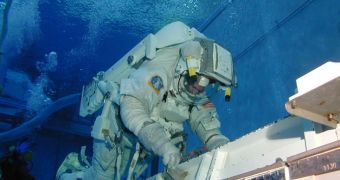Every time NASA astronauts go to Earth's orbit to conduct a spacewalk – be it aboard the International Space Station (ISS) or on a telescope – they know precisely what to do. But their knowledge is not just purely theoretical. Each astronauts gets intensive training before flying to space, and this is particularly true for those crew members who are scheduled to perform extra-vehicular activities (EVA). The simulations that get them accustomed to how they should move in microgravity are always conducted at the NBL, Space reports.
The facility is located at the NASA Johnson Space Center (JSC), in Houston, Texas, and is more formally known as the Neutral Buoyancy Laboratory. Generally, whenever something needs to be added, removed or replaced on the ISS, or on other spacecraft to which the American space shuttles can dock to, or capture, this is where US astronauts prepare. Russian cosmonauts have a similar facility, albeit smaller, at the Yuri Gagarin Cosmonauts Training Center, in Star City.
The basin at the NBL is 12 meters deep, and has a length of 61 meters, and a width of 30 meters. It is considered by some to be the largest indoor pool in the world, but that has yet to be confirmed. Inside, mission controllers place a simulation of whichever component or module astronauts need to work with during their actual EVA. This allows the specialists to get accustomed to the succession of movements needed to get the job done properly. Mastering the basic cascade of steps needed to complete a process successfully allows the astronauts to handle emergency situations that may appear in space better.
One of the disadvantages of conducting investigations in neutral buoyancy is the fact that future astronauts conduct their training in a high-drag environment. In the emptiness of space there is nothing preventing their arms or legs from moving, but the water opposes nearly all of their movements. This is why simulations conducted at the NBL take a very long time. Plus, people are not weightless inside the suit, but only outside it. As such, each mock spacesuit needs to be tailored to meet its wearer's dimensions, NASA experts say.

 14 DAY TRIAL //
14 DAY TRIAL //